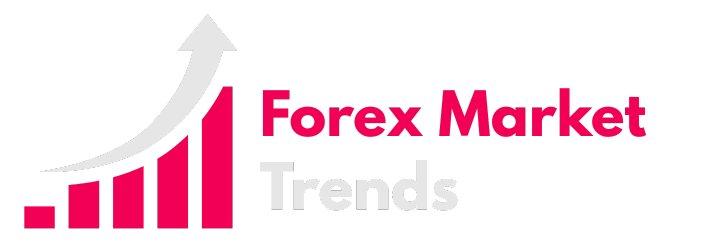
Familiarizing with Chart Types in Forex Software
Estimated reading time: 6 minutes
Key Takeaways
- Understanding different chart types is crucial for effective forex trading.
- Line charts provide *basic insights*, while bar and candlestick charts offer *deeper analysis*.
- Forex software types vary between desktop, web-based, and mobile applications, each with its unique *pros and cons*.
- Advanced technical indicators enhance trading strategies.
- Choosing software aligns with your *trading style* can significantly improve performance.
Table of contents
1. Line Charts
Line charts, the simplest type, plot closing prices over a specified period, forming a ‘line.’ This format provides a clear picture of general price movement, although it lacks in-depth detail about price range within the trading period.
2. Bar Charts
Bar charts are more complex, displaying the opening and closing prices as well as the highs and lows of the specific period. Each ‘bar’ represents a particular timeframe—useful for visualizing price range and volatility within the trading period.
3. Candlestick Charts
Candlestick charts offer the same information as bar charts but are visually more appealing due to their use of color. The ‘body’ (the wide part of the ‘candlestick’) represents the range between the opening and closing prices, while the ‘wicks’ indicate highs and lows [source].
Understanding these chart types will aid in interpreting the data that forex software provides, enhancing your trading abilities. You can find more about other chart types here.
Main Kinds of Forex Chart Software
Forex chart software’s principal types are downloadable desktop applications, web-based applications, and mobile apps. Each type presents its own set of advantages and disadvantages.
Downloadable Desktop Applications
These are robust software packages that users download and install on their computers. MT4 is a classic example. The main advantage is speed and precision, but they’re often less versatile because they’re bound to a single device.
Web-based Applications
These are accessible via a browser and don’t require installation, which affords flexibility. TradingView is a prime example of this type. They are typically user-friendly, though they may lack some of the more advanced functionalities of desktop software without add-ons [source].
Mobile Apps
Many forex trading platforms also offer mobile apps, providing maximum accessibility but often miss some functionalities of a full-blown desktop version.
Choosing the best kind depends on a trader’s individual needs and preferences. Therefore, it’s vital to consider the pros and cons of each before making a decision [source].
Leveraging Advanced Technical Indicators
Forex chart software often provides a range of advanced technical indicators for deciphering market trends and predicting future movements. With a deeper understanding of these tools, traders can leverage sophisticated analytics to refine their strategies.
Moving Averages
Moving Averages are an excellent tool to smooth out short-term fluctuations and highlight long-term trends. They can be simple or exponential and span various periods [source].
Relative Strength Index (RSI)
The RSI measures the speed and change of price movements, making it invaluable for spotting potential turning points in a trend.
Moving Average Convergence Divergence (MACD)
MACD comprises two moving averages and presents them as a single line—useful for giving buy or sell signals.
Learning to use these indicators can greatly enhance your trading strategy [source].
The Importance of Trading Style in Software Selection
Your trading style plays a pivotal role in your choice of forex chart software. Different trading approaches require different features.
Day Traders
Day traders need software with real-time data feeds and fast execution times. Tools like advanced charting, automated trading, and copious technical indicators are advantageous.
Swing Traders
Swing traders operate on longer timeframes, requiring software that offers advanced charting capabilities and in-depth technical analysis tools, as well as features for strategizing entries and exits over several days or weeks.
Scalpers
Scalpers, who trade many quick trades each day, require platforms with real-time data, rapid order execution, and minimal trading costs.
Position Traders
Position traders, who typically trade over weeks or months, require robust charting tools, in-depth technical and fundamental analysis features, and flexible interface customization.
Recognizing your trading style and corresponding software needs is an essential step towards successful trading.
Demystifying Forex Chart Software Pricing
Forex chart software usually features several pricing tiers, each offering distinct features. Understanding this pricing model eases the selection process.
Free Plans
Free plans are typically basic but can suffice for novice traders on a tight budget or those wishing to try out a software.
Paid Plans
Paid plans usually come in tiers, with higher-cost tiers offering traders additional features like priority customer support, more charts, faster data feeds, and advanced analytical tools. Particular attention is needed to evaluate if the added features justify the increased costs.
Extra Costs
Some software also incurs extra costs for data feeds or add-ons—important to consider when budgeting your trading expenses.
Trial Periods
Many paid platforms offer a trial period or a money-back guarantee. These options minimize the risks of committing to a platform that may not be suitable.
Knowing this pricing structure can inform your decision regarding which software to choose, ensuring that you get the best value for your money.
Frequently Asked Questions
1. What are the main types of charts used in forex?
The main types of charts used in forex are line charts, bar charts, and candlestick charts.
2. How do I choose the right forex chart software?
Choose software based on your trading style, required features, and whether you prefer desktop, web, or mobile applications.
3. Are there free options for forex chart software?
Yes, many platforms offer free plans with basic features suitable for novice traders.

